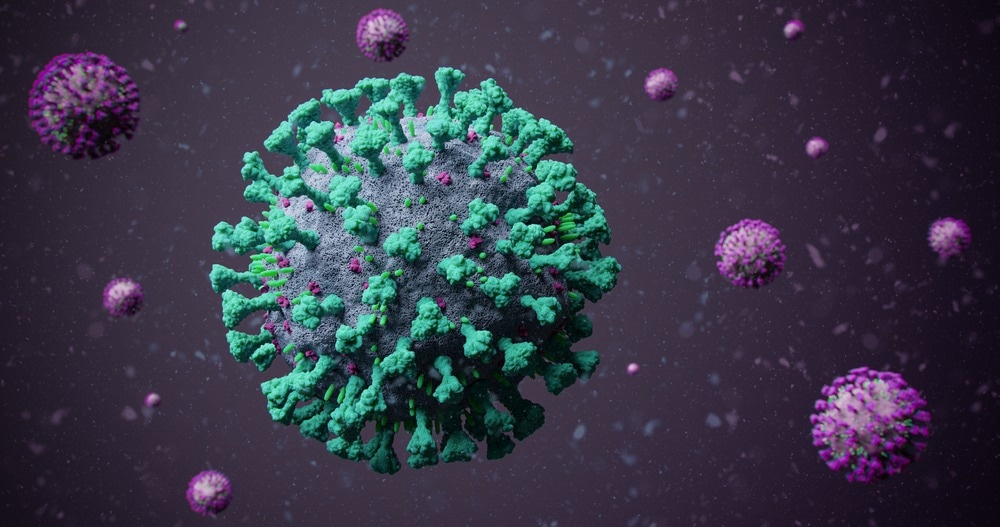In a recent study posted to the medRxiv* preprint server, researchers evaluated compositional and structural pulmonary alterations in PASC [post-acute coronavirus disease 2019 (COVID-19)] tissues.
 Study: Persistent alveolar type 2 dysfunction and lung structural derangement in post-acute COVID-19. Image Credit: Darryl Fonseka/Shutterstock
Study: Persistent alveolar type 2 dysfunction and lung structural derangement in post-acute COVID-19. Image Credit: Darryl Fonseka/Shutterstock

 *Important notice: medRxiv publishes preliminary scientific reports that are not peer-reviewed and, therefore, should not be regarded as conclusive, guide clinical practice/health-related behavior, or treated as established information.
*Important notice: medRxiv publishes preliminary scientific reports that are not peer-reviewed and, therefore, should not be regarded as conclusive, guide clinical practice/health-related behavior, or treated as established information.
Background
Studies have reported long-term immunological and serological alterations in PASC tissues; however, the pathological fundamentals of respiratory symptoms among PASC patients have not been understood completely. The authors of the present study previously found extensive infection and increased fibrosis among pulmonary AT-2 (alveolar type 2) cells associated with COVID-19 severity.
About the study
In the present study, researchers investigated whether pulmonary PASC features resemble those of chronic pulmonary disorders such as UIP/IPF (usual interstitial pneumonia associated with idiopathic pulmonary fibrosis).
Multiplexed imaging analysis was performed to analyze the pulmonary tissues of 12 individuals who died post-acute coronavirus disease 2019 (PC) and to compare them to those of individuals who died during the acute COVID-19 phase (n=4) or individuals who died with UPI/IPF (n=2), and otherwise healthy lung tissues (n=2). A 39-antibody panel capturing multiple structural and immunological pulmonary compartments was designed, and the antibody clones were validated by immunofluorescence analysis and chromogenic staining. A pathologist confirmed the findings.
Imaging mass cytometry and immunohistochemistry analyses were performed, and deoxyribonucleic acid (DNA) was stained. Imaging mass cytometry data were pre-processed and macroscopically assessed. Subsequently, microanatomical features were annotated, and the types of cells were identified. Various dimensionality reduction techniques, including principal component analysis (PCA), multidimensional scaling, isomaps, and spectral embedding, were used for data analysis.
The PC individuals were divided based on the most recent NP (nasopharyngeal) testing report obtained before death as PC+ (PC-pos) or PC-ve (PC-neg). The expression of markers such as surfactant proteins (SFTP)-A,C, and SCGB1A1 (secretoglobin family 1A, member 1) was assessed.
The team investigated the severe acute respiratory syndrome coronavirus 2 (SARS-CoV-2) presence in AT-2 cells, validated by in situ hybridization, polymerase chain reaction (PCR), and immunohistochemistry. Pulmonary neutrophil deployments of extracellular traps (NETs) were quantified, and pathology-specific and time-specific processes were deconvoluted, contrasting time-associated tissue alterations since acute COVID-19 across all individuals and PC subgroup differences.
Results
SARS-CoV-2 was detected in the pulmonary tissues up to 359.0 days post-acute COVID-19 phase, including among individuals with SARS-CoV-2 negative NP swab results. The pulmonary tissues of PC individuals were characterized by fibrosis, senescent AT-2 cell accumulation, and hypervascularization of peri-bronchial regions and alveolar septa.
In addition, more fibrosis (except in the early period of acute SARS-CoV-2 infection) was observed. Surprisingly, the extent of microanatomical pathological changes among PC patients was similar to those with UIP/IPF and acute SARS-CoV-2 infections. Neutrophils (hallmark in early acute SARS-CoV-2 infection) were significantly greater among PC tissues than those of the late acute phase of SARS-CoV-2 infections.
Contrastingly, interstitial and peri-bronchial macrophages (the characteristic feature of late acute SARS-CoV-2 infection) were significantly greater among all diseases compared to healthy lungs. More dense fibroblasts and vascular endothelial cells in the walls of the airways and the cluster of differentiation 4+ (CD4+) T lymphocyte cells were observed among PC tissues compared to healthy lungs and acute SARS-CoV-2 infection tissues. In PC-neg samples, a greater density of alveolar type-2 cells was observed. SARS-CoV-2 S immunoreactivity was predominant among SFTPC alveolar type 2 cells among PC-neg tissues at levels similar to late SARS-CoV-2 infection tissues.
Elevated interleukin-6 (IL-6) levels were observed with significantly higher cell senescence-linked uPAR (urokinase-type plasminogen activator receptor) and p16INK4A expression in PC-neg and late-phase COVID-19 alveolar type 2 cells. Significantly greater senescence marker levels were observed among PC-neg and late COVID-19 tissues in vascular and mesenchymal endothelial cells and fibroblasts, with more ectopic AT-2 cells in the alveoli and airway lumen. More macrophages and neutrophils in PC and acute COVID-19 tissues and more AT-2 cell injury and fibroblasts in PC and UIP/IPF tissues were noted.
PC-pos individual tissues resembled those of UIP/IPF tissues, whereas the tissues of PC-neg individuals and early COVID-19 patients were more similar. Increased density of peri-bronchial monocytes and macrophages was found in acute COVID-19 compared to healthy lung tissues. In contrast, the presence of CD4+ T lymphocytes, mast cells, and vascular remodeling was characteristic of IPF tissues. The team found an agreement between cellular compositional alterations among PASC and acute COVID-19 tissues with CD206+/CD163+ myeloid cells dominant changes compared to healthy lung tissues.
In PC tissues, vascular endothelial cells in airway walls were denser. More widespread ectopic microvasculature with significantly more numerous smooth muscle cells in alveolar septa and peri-bronchial areas was observed. The extracellular citrullinated H3 NET marker expression was significantly greater among PC cells than in healthy lung tissues.
An increased number of fibroblasts with time was observed in both PC subgroups. Mast cells were more abundant in PC-pos than PC-neg tissues. As in IPF, PC tissues showed extensive CC16 (Clara cell protein) secretion in peri-bronchial areas. SCGB1A1 levels were comparable between the PC-pos and IPF tissues.
Conclusion
Overall, the study findings highlighted an aberrant cellular and microanatomical state of pulmonary tissues of PASC individuals, with a few similarities with UIP/IPF features, especially among individuals with long-term active SARS-CoV-2 infection.

 *Important notice: medRxiv publishes preliminary scientific reports that are not peer-reviewed and, therefore, should not be regarded as conclusive, guide clinical practice/health-related behavior, or treated as established information.
*Important notice: medRxiv publishes preliminary scientific reports that are not peer-reviewed and, therefore, should not be regarded as conclusive, guide clinical practice/health-related behavior, or treated as established information.